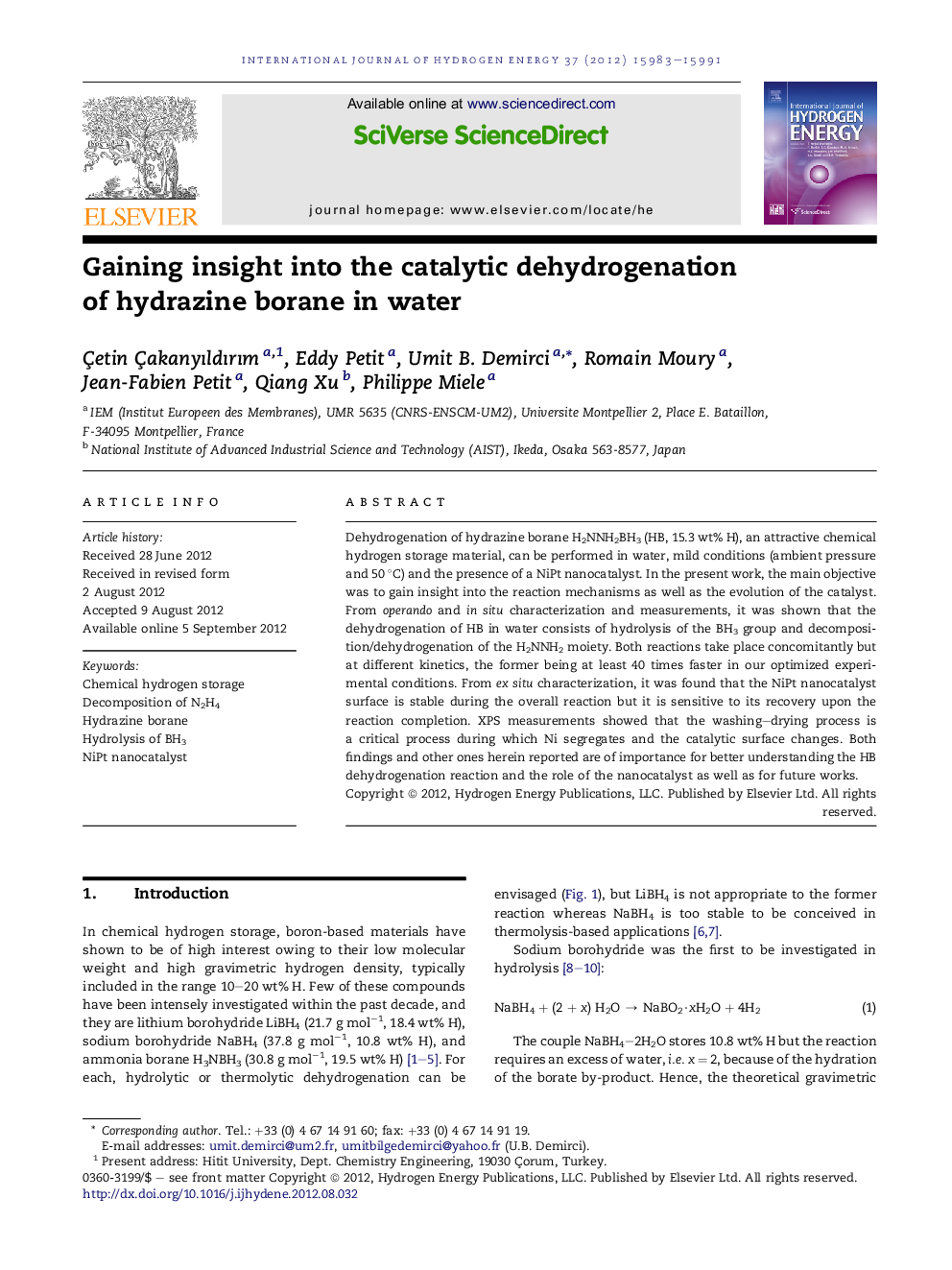| Article ID | Journal | Published Year | Pages | File Type |
|---|---|---|---|---|
| 1282126 | International Journal of Hydrogen Energy | 2012 | 9 Pages |
Dehydrogenation of hydrazine borane H2NNH2BH3 (HB, 15.3 wt% H), an attractive chemical hydrogen storage material, can be performed in water, mild conditions (ambient pressure and 50 °C) and the presence of a NiPt nanocatalyst. In the present work, the main objective was to gain insight into the reaction mechanisms as well as the evolution of the catalyst. From operando and in situ characterization and measurements, it was shown that the dehydrogenation of HB in water consists of hydrolysis of the BH3 group and decomposition/dehydrogenation of the H2NNH2 moiety. Both reactions take place concomitantly but at different kinetics, the former being at least 40 times faster in our optimized experimental conditions. From ex situ characterization, it was found that the NiPt nanocatalyst surface is stable during the overall reaction but it is sensitive to its recovery upon the reaction completion. XPS measurements showed that the washing–drying process is a critical process during which Ni segregates and the catalytic surface changes. Both findings and other ones herein reported are of importance for better understanding the HB dehydrogenation reaction and the role of the nanocatalyst as well as for future works.
► The dehydrogenation of hydrazine borane in water is in fact a complex reaction. ► The hydrolysis of BH3 and the dehydrogenation of N2H4 occur concomitantly. ► The former reaction has faster kinetics, in our conditions 40 times faster. ► The surface of the NiPt nanocatalyst is stable during the overall reaction. ► However, the Ni element segregates during the washing–drying process after reaction.
